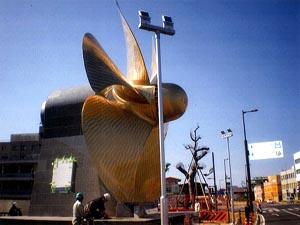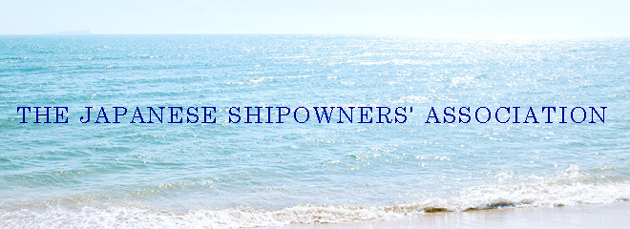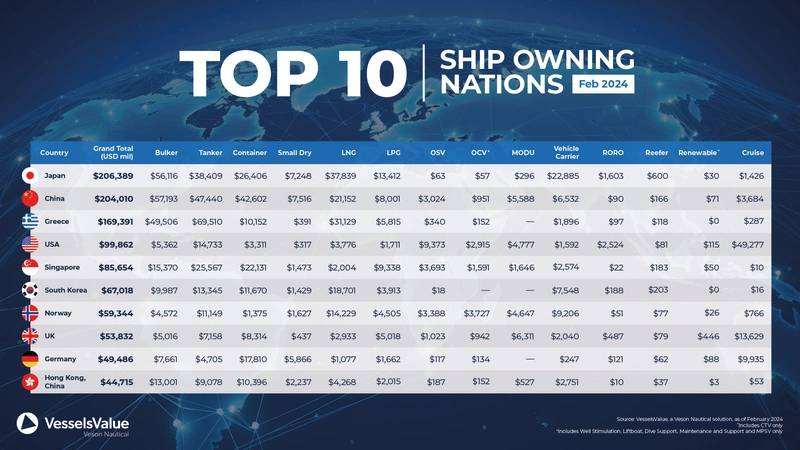
〆Title: Japanese Shipowners, Both Domestic and Abroad, Shift Toward Debt-Free Vessels. Medium-Sized Owners in Japan Hold Off on New Ship Investments, While Some Major Owners Prioritize Repaying Ship Loans and Increasing Debt-Free Fleets.
On the evening of April 25, in the heart of Tokyo’s Marunouchi district, the Tokyo Kaikan buzzed with activity as Pacific Basin, a shipping operator and owner based in Hong Kong, hosted a gathering. The CEO, Martin Fruergaard, opened the proceedings, highlighting their status as the largest user of Japanese-built Handysize and Supramax vessels and a major charterer of ships owned by Japanese firms. The event attracted over 300 stakeholders from Japanese shipping, shipbuilding, trading companies, finance, and marine products sectors.
■ Soaring Prices of New Ships
The expansion of the Pacific Basin’s fleet is notable, with its operational ships growing from 240 to about 320 in the past year. This includes 145 core vessels (owned or long-term chartered) and 178 short-term charters. Fruergaard pointed out that over 90% of their core fleet consists of Japanese-built ships, underscoring their deep ties with Japanese shipyards and owners. He expressed Pacific Basin’s commitment to providing safe, high-quality transport services centered around environmentally efficient Japanese vessels.

However, the shipbuilding industry faces challenges, particularly with the rising prices of new ships. According to Clarkson’s Research, the current price for a new 40,000 DWT Handysize vessel is around $30 million, roughly stable compared to last year, but the “real price is higher,” according to one trading company’s shipping department. The shipbuilding slots in Japanese yards are mostly booked by major owners, with some reservations extending into 2028.
The investment climate is cautious among shipowners. While Pacific Basin has historically balanced its portfolio by selling ships when prices are high and investing when low, the current uncertainty about suitable new fuels has made immediate decisions difficult. Fruergaard revealed that they are considering a joint project with Japanese shipyards and Mitsui & Co. for developing methanol-fueled ships.
With strong financial results in 2021-22, Pacific Basin has prioritized repaying interest-bearing debts, increasing their number of debt-free ships to over 65. This strategy is becoming more common among Japanese owners as well, dividing them into two groups: those pushing for major investments and those focusing on paying off ship loans. The choice of strategy is complex and not a matter of right or wrong. However, both approaches benefit from the current weak yen and robust dry bulk market conditions, providing abundant yen funding and steady charter income.

■ Invest or Repay?
A regional bank official noted mixed feelings about the reduction in loans due to repayments or selling of second-hand ships. However, with the exchange rate volatility and the yen’s value potentially strengthening, the strategy to increase debt-free ships appears prudent. This market situation offers broad options for both domestic and international shipowners, with decisions likely to significantly impact future revenues.
This insight into the strategies of Japanese shipowners, amidst a backdrop of economic and environmental considerations, paints a picture of an industry at a crossroads, choosing paths that will shape their futures in profound ways.
Published biweekly on Mondays by the Domestic Shipowners Reporting Team.
Photo courtesy =VesselsValue, 日本船主協会(JSA)
(連載・第369回)
日本船主の現在
タイトル:海外や日本の船主がデットフリー船の保有に動いている。日本の中手船主は新造船への投資を様子見している。一部の日本の大手船主は船舶ローンの返済を優先し、デッドフリー船を増やしている。
4月25日夕、東京・丸の内の東京会館。香港に本社を置く運航船社(オペレーター)兼船主のPacific Basinパシフィック・ベイスン(PB)がパーティーを開催していた。
Mr. Martin Fruergaard, CEO(最高経営責任者)が口火を切る。
「われわれは日本建造のハンディサイズ、スープラマックスの世界最大のユーザーである。日本船主の保有船の最大のチャータラーの一角だ」
会場に集まった300人以上の日本船主、造船所、商社、金融、舶用製品の関係者の視線は一様に熱を帯びていた。